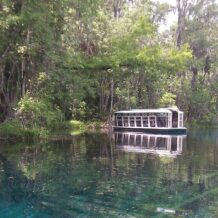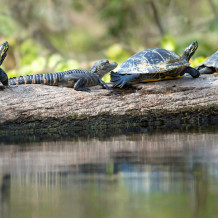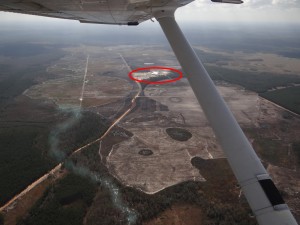caring for your spring
Silver Springs
Reducing nitrate levels by 79% is a lofty goal. However; everyone can do their part. Citizens can conserve water, use less fertilizer and have their septic tanks pumped. Businesses can follow the same course and agricultural industries can follow best management practices suggested by DEP.
As you can see from this report several materials increase nitrates in Silver Springs.
“A variety of sources contribute nitrates to the Springs, including livestock, fertilizers, human and industrial wastes, and atmospheric deposition.” There are charts presented here that show a correlation between population increases and nitrate levels.
At the DEP BMAP meeting in Ocala 1/23/13, DEP staff stated the best use of agricultural land to keep nitrates low is silviculture (planted pines) and the worst use is raising cattle. This is a concern because of the current construction of Adena Springs Ranch much of which is in the Silver Springs springshed. St Johns Riverkeeper maintains a blog post regarding the 30,000 +- acre project. Click on this link to see updates.
Many people are concerned about the proposed increase of water withdrawals and additional manure from 17,000 cattle in an area where water conditions are already so poor. To see what people are saying see www.silverspringsalliance.org.
Adena Springs Ranch
This is a photograph taken during a Putnam County Environmental Council (PCEC) flyover project on Jan. 10, 2013. The cleared areas are surrounding the Adena Springs Ranch slaughterhouse which is the white building in the distance (circled in red). In the foreground Mill Creek can be seen through the trees (highlighted in light blue). This creek runs out to the Ocklawaha which feeds the St Johns River. The Ocklawaha is already listed as an impaired waterbody described by DEP as “waterbodies that are impaired and in need of water monitoring, cleanup and restoration”. Residents are concerned about the effects of the runoff which will likely carry manure, fertilizer and pesticides into the rivers. Adena has publicly stated their goal is to raise approximately 17,000 cattle and slaughter 300 head per day. They also said the containment ponds in front of the slaughterhouse would hold the washout water from the slaughtering process and it would be sprayed on the fields.
DEP has determined nitrates need to be lowered by 79% in Silver Springs. DEP staff is now in the process of creating a BMAP for Silver Springs. Of the two maps available they have chosen a Silver Springs springshed map that excludes the area seen in this photograph. The BMAP or Basin Management Action Plan is “designed to implement restoration strategies that will sufficiently reduce the pollutant concentrations”. As a local citizen and charter boat operator on Silver River, Ocklawaha and the St Johns River I would like to see this area included in the BMAP springshed boundary. If DEP staff would chose the larger map like was mentioned in the March BMAP meeting it would be included. At the public meeting in April, Adena staff suggested the boundary line be left where it is and not move it east which would serve to exclude the slaughterhouse. There is a chance for the natural systems I have mentioned to receive some protection if the boundary includes this area. If the larger map is not used, as publicly suggested by Adena staff then I suppose this area will be nothing more than a sacrifice zone written off by regulatory agencies to enable corporate profits. If you want to send a comment to the SJRWMD click on this link. I think there have been about 1,800 comments so far, almost all of them in objection of this permit.
Southern Legal Counsel has been hired by some very concerned local residents to prepare for an administrative hearing if Adena’s CUP is approved and I support them in that effort. Contact me if you want to get involved, (info @ wateractionteam dot org) or you can contact the legal firm directly to contribute to the Water Protection Fund. I am so saddened to see tens of thousands of acres of trees being cleared down to the sand and mud across multiple counties to make way for pasture. Not only are we losing trees to produce oxygen and facilitate rain via the transpiration process, vast wildlife habitat areas are being denuded on an on going basis. I lay awake at night thinking about baby birds toppling from nests, rabbit wrens, fox dens and Gopher tortoises being run over and crushed under heavy machinery. These are sad times for the web of life in north central Florida, left to the mercy of Frank Stronach’s plans.
After reviewing the applicant’s April 18, 2013, information submittal, District staff determined that additional technical information is needed regarding the application. On May 17, 2013, District staff sent a third RAI letter to Adena Springs Ranch. The applicant has until Sept. 16, 2013, to respond to the RAI letter or to request an extension to the response time frame. When the application is considered complete, District staff will determine if the requested allocation of water meets District permitting criteria.






